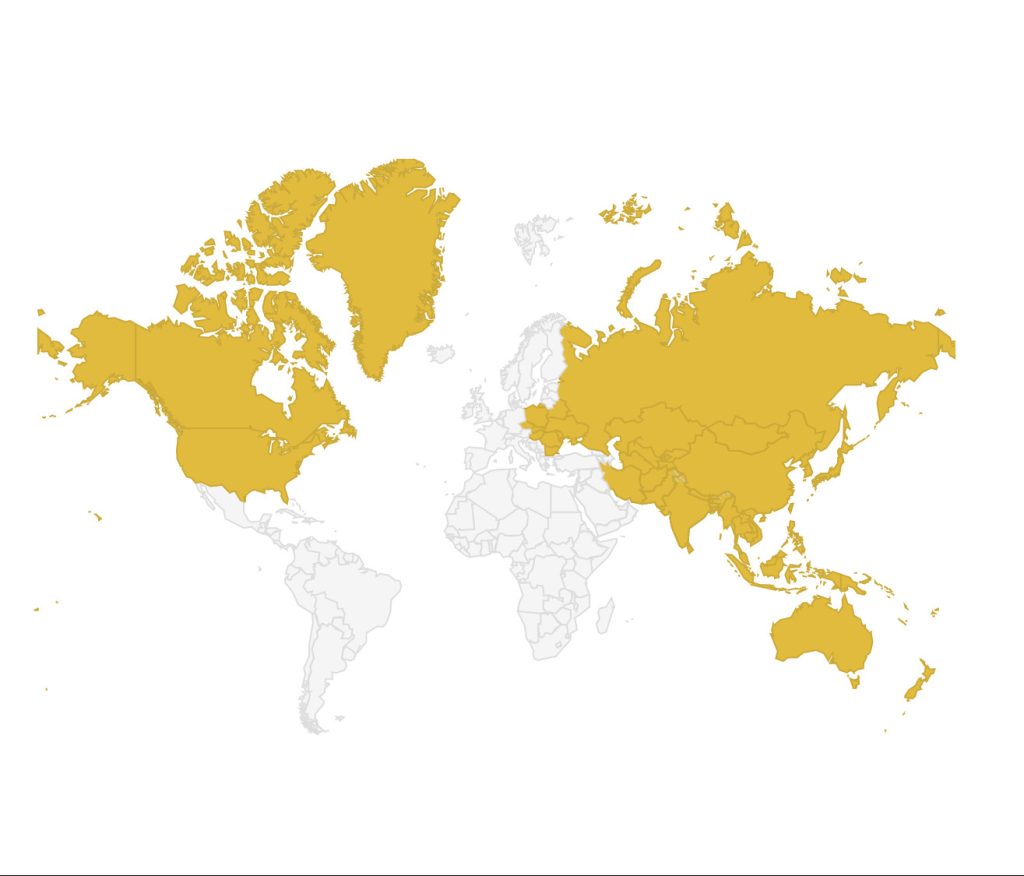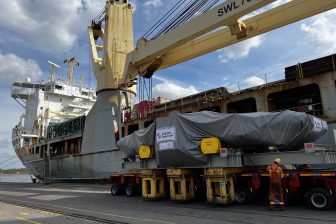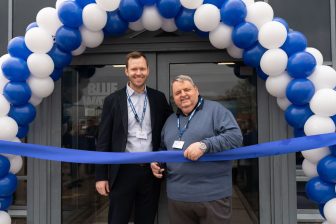
We go for niche destinations, Anton Plompen, Greycarrier
“With the present market disruptions, options are continuously shifting and changing. Right now the number of carriers to specific areas is going down, not up, that makes our job very interesting,” states Anton Plompen, marketing director of Greycarrier.
The Ossendrecht-based company, Greycarrier, is a multi-purpose niche carrier, whose clientele is mostly composed of major and mid-sized forwarders. They handle breakbulk, ro-ro, and out-of-gauge (OOG) or project cargo from north and south Europe to a global range of smaller overseas ports, and if needed, inland destinations which are not offered by regular carriers. “We don’t compete with the big carriers for main destinations like Shanghai for instance,” explains Anton Plompen, “We go for niche destinations.”
Such destinations might include Guam, Chicago, Alaska, Hawaii, Mexico’s west coast, India’s east coast, and Southeast Asia destinations like Chittagong, in Bangladesh. “We arrange for the cargo to be shipped to the closest hub, where we work with our local handling agent to get the cargo to its final destination. This can include road, rail or even barge transport,” says Plompen,“We have over 100 handling agents worldwide in transhipment hubs, a large network, on which we lean heavily. We also strive to use companies we already have experience with.”
Solution Minded
Being a niche carrier, Greycarrier’s team of five employees is no stranger to problem-solving. Some recent projects include getting a shipment of large agriculture machines from the Netherlands to Sandusky, Michigan, in the midwestern United States. Because the Great Lakes Saint Lawrence Seaway is currently closed for the winter, Greycarrier arranged the ro-ro shipment to Baltimore, Maryland, followed by truck transport with escorts through five different states.
Similarly, when tasked with getting cargo to Tijuana in Mexico, 275 kilometres south of Los Angeles, Greycarrier arranged a ro-ro shipment, followed by truck transport, due to the lack of connecting feeders. A similar operation is applied for OOG cargoes to Vancouver in British Columbia, Canada, from a West Coast port.
“Every day we get a new challenge, you have to think differently. Problem-solving, puzzling, and finding smart solutions, that is our thing. We are solution minded,” comments Plompen. This is particularly true in the present market. Indeed, according to Plompen: “There are a lot of disrupted services compared to pre-pandemic situations. Roro carriers have penetrated the breakbulk and project cargo market quite substantially for example, but right now they are not offering the space, and the cargo still needs to be shipped. Many customers come to us to find creative solutions.”

Changing Times
This is not the first time that Anton Plompen has borne witness to changes in the shipping industry: “I began working in the industry when the first container ships started sailing, in the early 1960s to late 1970s. The vessels only had capacities of around 400 TEU at the time, which is a huge difference compared with 23,000 to 24,000 TEU today. Everything has changed,” he explains, “At the time, I started an operation combining breakbulk and containers. I travelled the world, living in Canada and the USA. I also worked in the far east. I’ve seen how the industry has been growing and how it has been developing, throughout the years.”
“The number of ports has also skyrocketed, in terms of destinations offered. Today, the top
five container carriers now basically cover all destinations worldwide for containers, although not necessarily for breakbulk,” he states. “Some decades ago, most lines only connected large ports, combining breakbulk and containers at the time. Additionally, only up until only a decade ago, Ro-Ro vessels only connected car manufacturing hubs, but that has definitely changed. Keeping track of these changes and evolutions remains central to the business.”
Finger on the pulse
“As marketing director, I handle all the marketing and sales issues, and rate requests. I am responsible for setting up the quotes, so we quote transparent lump sum on an all-in basis for our clients and then work with them, and they conclude the deal or not. Then our operational people take over the booking, and issue a through b/l from the port of loading to the final port of discharge or inland location as per the quote issued,” describes Plompen.
“We have accumulated the recent decades a lot of experience so we know which carriers
are offering direct services to our transhipment hubs from where we organise the connecting modes of transportation…In this industry, you need to be flexible, and experienced, have knowledge of sailing schedules, who is offering what and where… You need to have your finger on the pulse, use your network, and draw from your past experience,” stresses Plompen.
“New opportunities are also always arising, both in terms of increasingly niche destinations, as well as customer base. Our major markets are Belgium, Germany, and France, but we are receiving more and more requests from Spain and Italy. We have also decided to start looking for a strategic or alliance partner in order to be prepared for the next level. I love my work because I can explore a new line of thinking every day to find the optimal solution for the customer,” he concludes.
Read also:



